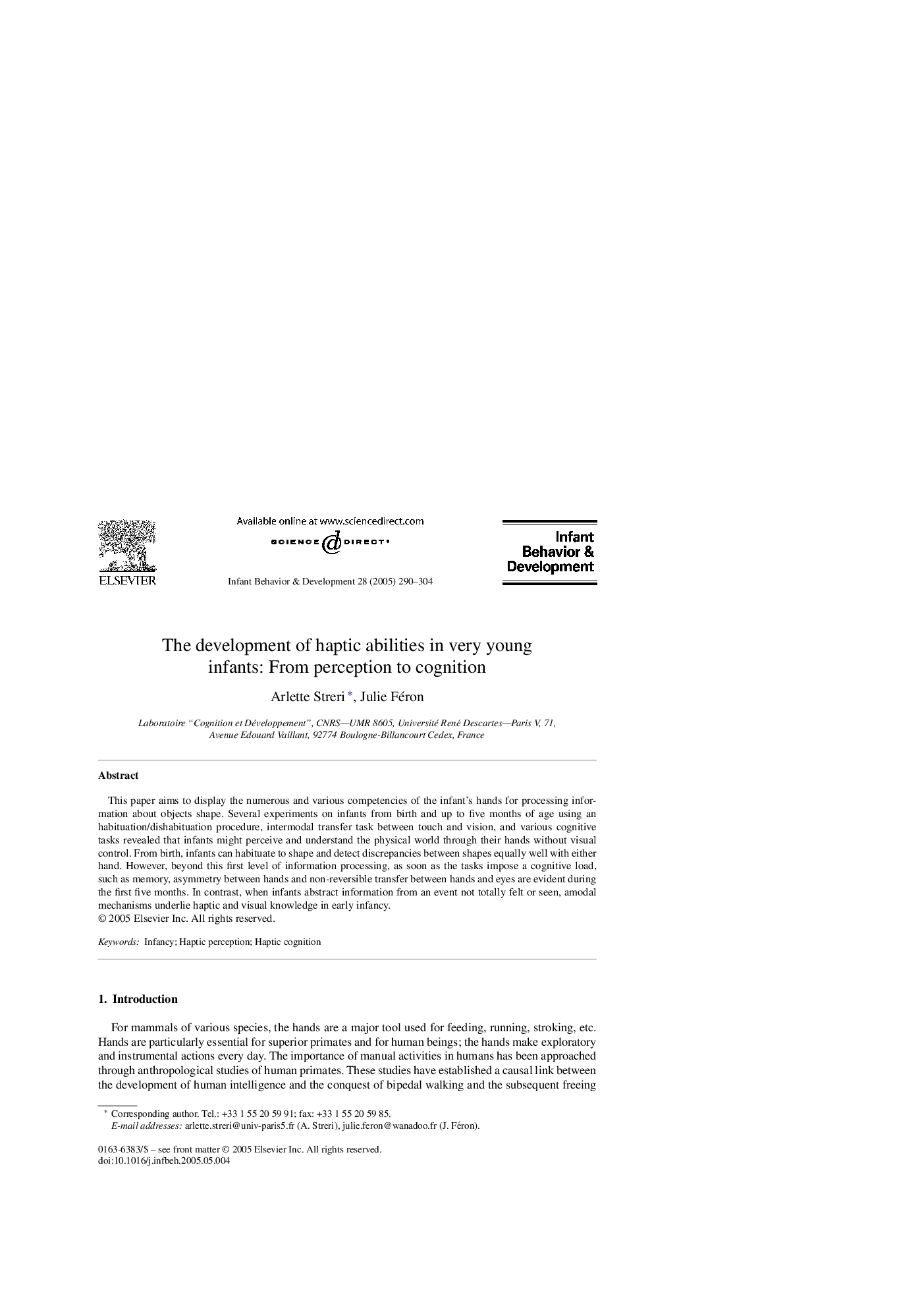| Article ID | Journal | Published Year | Pages | File Type |
|---|---|---|---|---|
| 10452882 | Infant Behavior and Development | 2005 | 15 Pages |
Abstract
This paper aims to display the numerous and various competencies of the infant's hands for processing information about objects shape. Several experiments on infants from birth and up to five months of age using an habituation/dishabituation procedure, intermodal transfer task between touch and vision, and various cognitive tasks revealed that infants might perceive and understand the physical world through their hands without visual control. From birth, infants can habituate to shape and detect discrepancies between shapes equally well with either hand. However, beyond this first level of information processing, as soon as the tasks impose a cognitive load, such as memory, asymmetry between hands and non-reversible transfer between hands and eyes are evident during the first five months. In contrast, when infants abstract information from an event not totally felt or seen, amodal mechanisms underlie haptic and visual knowledge in early infancy.
Keywords
Related Topics
Life Sciences
Neuroscience
Behavioral Neuroscience
Authors
Arlette Streri, Julie Féron,
